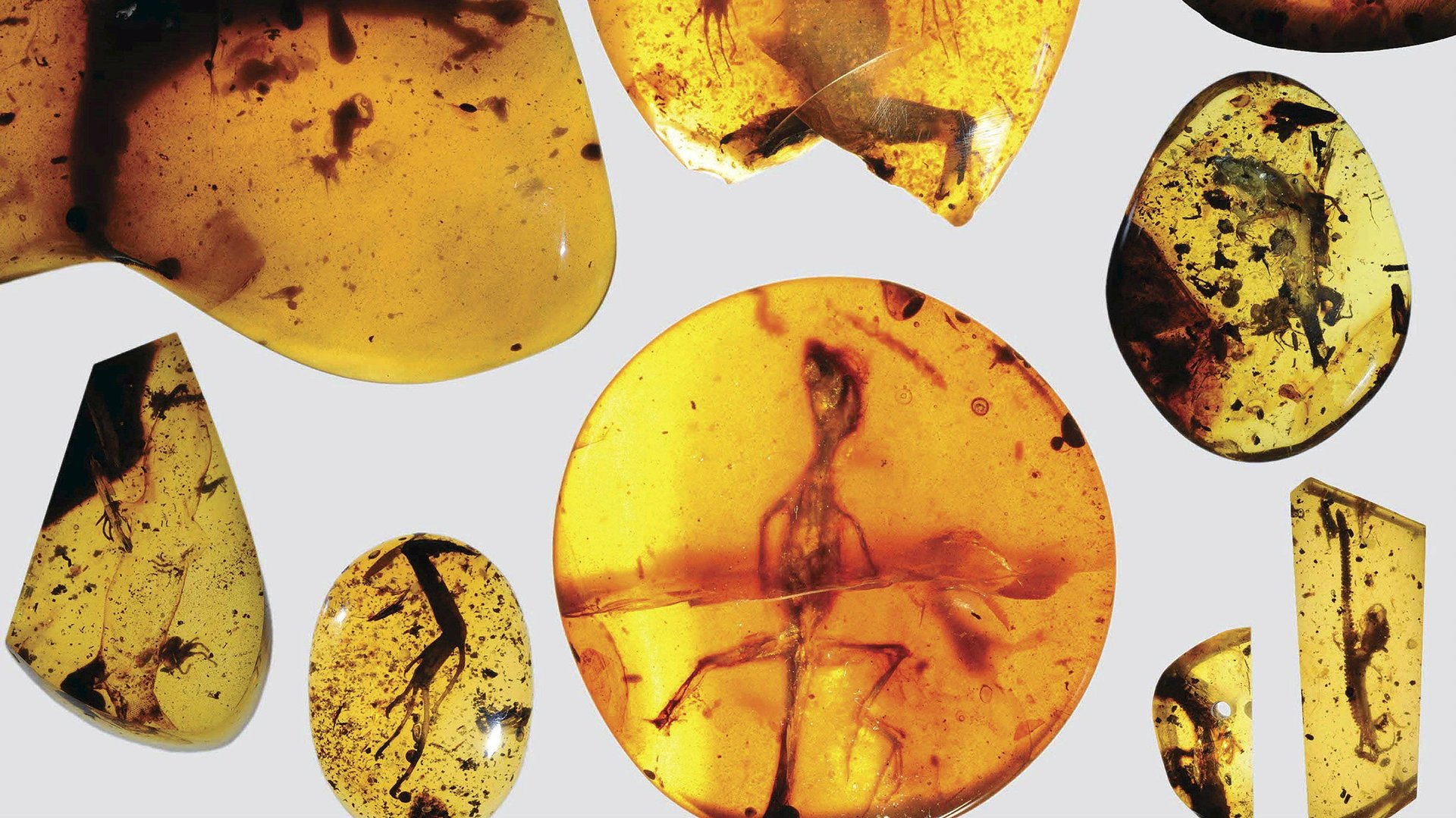One of the best fossilized lizards ever found lived 99 million years ago
This post has been corrected.


This post has been corrected.
A tiny lizard came to an unfortunate end 99 million years when it got trapped in the sticky resin of ancient trees. But one lizard’s bad luck is another researcher’s break.
The resin eventually fossilized into amber, which preserved the lizard’s soft tissue and bones, and this fossil is providing researchers with “unique insights” into the evolution of reptiles, giving them a snapshot of what life was like almost 100 million years ago. The fossilized lizard is among a trove of specimens, including a gecko and a chameleon, that were analyzed for the first time.
Researchers noted that the fossilized tiny lizard is the oldest specimen preserved in amber—75 million years older than the previous record holder. Researchers were somewhat startled by just how well-preserved the specimens were, describing it as “exceptional” in the study published in Science Advances.
“The fossil record is sparse because the delicate skin and fragile bones of small lizards do not usually preserve, especially in the tropics, which makes the new amber fossils an incredibly rare and unique window into a critical period of diversification,” co-researcher Edward Stanley, from the University of Florida, said in a statement.
The fossilized lizard is thought to be a “missing link,” which helps explain just how modern-day chameleons and geckos got their features today. The amber gecko had advanced adhesive toe pads, confirming this feature originated earlier than previously thought.
The Southeast Asian chameleon—found in modern-day Myanmar—challenges the view these kinds of chameleons originate from Africa. And while the fossilized lizard had the projectile tongue of the modern chameleon, it had yet to evolve their unique body shape and fused toes.
The post earlier said that this was the oldest fossilized lizard. It is, in fact, the oldest lizard to be fossilized in amber.